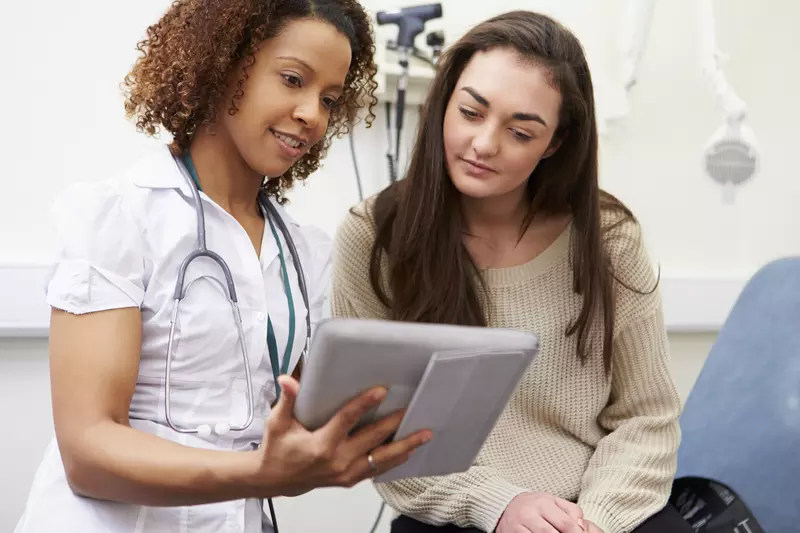- AdventHealth

There probably isn't a woman who wouldn't hold her breath when her doctor mentioned the word tumor. But when it's a fibroid tumor, there's usually little to fear.
And while they sound scary, uterine fibroids, as medical conditions go, are majorly misunderstood. Here's what you should know about uterine fibroids.
1. Fibroids are not cancer.
They are renegade muscle cells that come together to form a fibrous knot or mass within or on the surface of the uterus. Many women have them, often without knowing it, but they're not cancerous.
2. They're common.
Most women develop fibroids at some point, and they usually make an appearance after puberty. In the United States, women ages 25 to 44 have about a 30 percent chance of having fibroids.
3. The exact causes are unknown.
No one knows exactly what causes fibroids. But the hormones that regulate your periods, particularly estrogen, play a part. Fibroids increase in size slowly over the years. But when estrogen levels in your body rise, their rate of growth increases.
4. They may not affect your fertility.
The big myth about fibroids is they always reduce your chances of getting pregnant. Those that change the shape of the uterine cavity (submucous) or are within the cavity (intracavitary) may decrease fertility by about 70 percent. That's because they bulge into the uterine cavity, potentially affecting embryo implantation and fetal growth. On the plus side, removal of these fibroids increases fertility.
5. Size and location matters.
Fibroids vary in size. Many are microscopic. A few are as big as oranges. But even if you have a submucosal fibroid (the scary one), its size and position usually means there's no threat to pregnancy. All obstetricians have experience dealing with fibroids and pregnancy, so be sure to talk with your doctor if you're concerned. Most women who have fibroids and become pregnant don't need to see an OB who deals with high-risk pregnancies.
6. Several factors affect your chances of getting them.
Fibroids are pretty random. You're more likely to get them when you're over 30, if you had your first period at an early age or if there's a family history. Your chances are lower if you've had children, gone through menopause, or started taking birth control pills, which can regulate estrogen levels. A recent study by the American College of Obstetricians and Gynecology found 70 percent of Caucasian women and 80 percent of African-American women will develop fibroids by age 50.
7. Symptoms? Not always nice.
Most women with fibroids don't have symptoms. Others may experience heavier and longer periods,lower abdominal pain, constipation and pain during sexual intercourse.
8. They are often found during routine pelvic exams.
Your doctor may feel irregularities in the shape of your uterus. If fibroids are suspected, you may be asked to undergo further testing including a magnetic resonance imaging (MRI), a trans-vaginal ultrasound, a hysterosalpingography (HSG) or even a hysteroscopy. A biopsy may be scheduled just to rule out cancer. Don't panic uterine cancer is rare.
9. Treatment may not be necessary.
Because most fibroids are harmless, they often don't require treatment outside of monitoring. They're usually small and in a safe location. Simple pain relievers, such as ibuprofen, can help. So can birth control pills. Surgery to remove problematic fibroids may be necessary if you have unsuccessfully been trying to get pregnant. In this case, or if you are not yet ready for pregnancy but plan to have a child in the future, myomectomy is an option where only the fibroids are removed from the uterus.
Heavy, prolonged, and painful periods caused by uterine fibroids will stop naturally after you reach menopause. However, if nothing is working and children either aren't in your future or if you've completed your family, hysterectomy where the entire uterus is removed may be an option.
Both myomectomy and hysterectomy can be done laparoscopically, robotically, through the vagina or through a larger abdominal incision.
To learn more about our women's care at AdventHealth, visit our website.


